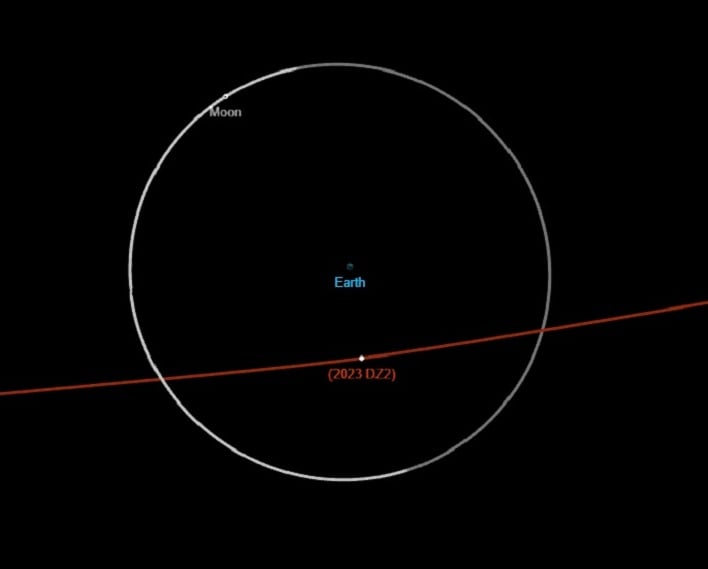Watch A Huge Asteroid Fly Between Earth And The Moon In A Once In A Decade Event

2023 DZ2 is currently estimated to have a diameter of 210 feet (64 meters) and is part of the Apollo family of asteroids, according to a post on EarthSky. In comparison, the asteroid that entered Earth's atmosphere over Chelyabinsk, Russia, in 2013 was approximately 65 feet (20 meters) in diameter. That asteroid caused widespread damage and injuries in the area.

For those who want to try and catch a glimpse of the asteroid as it zips between Earth and the Moon at a speed of 17,403mph (28,008km/h), it should be able to be viewed using six-inch (15cm) and larger diameter telescopes. Even though 2023 DMZ2 is traveling at what seems like a breakneck speed to us here on Earth, its speed of 7.78km/s is relatively slow compared to other space rocks being studied.

According to EarthSky, one of the better-known techniques for being able to spot an asteroid is to point the telescope at a known star in the asteroid's path. After obtaining the star in the field of view, simply wait for the asteroid to pass by.
The best time to view asteroid 2023 DMZ2 will be on the night of Friday, March 24, 2023, in the Northern Hemisphere. If you are lucky enough to capture any images of the nearby space rock, be sure to share them in the comments below.

